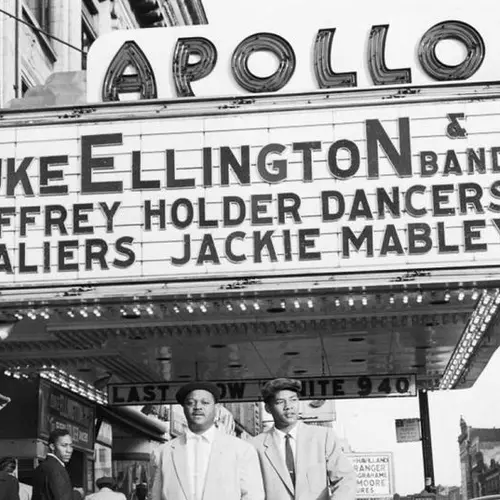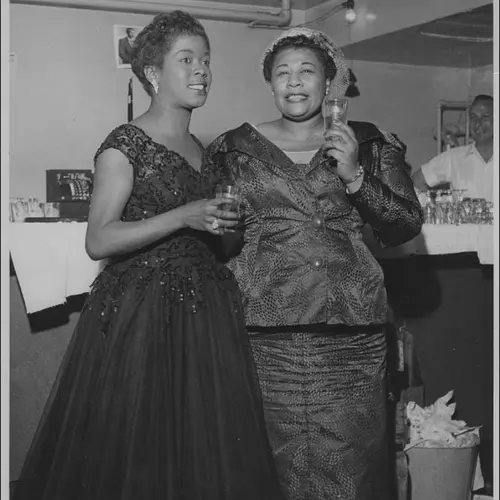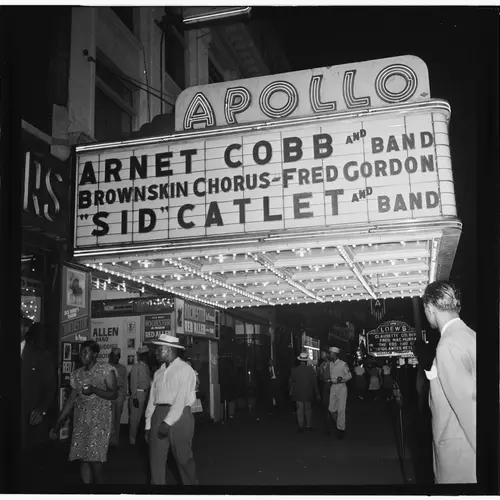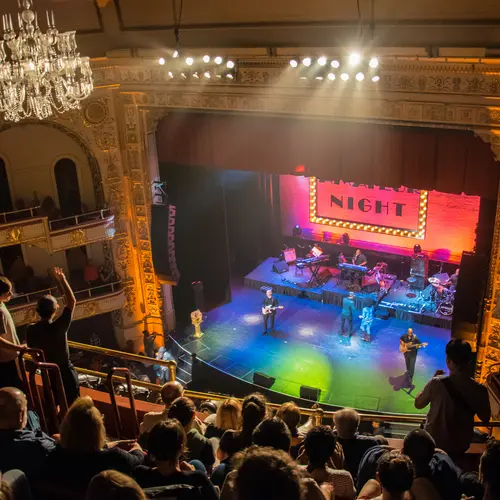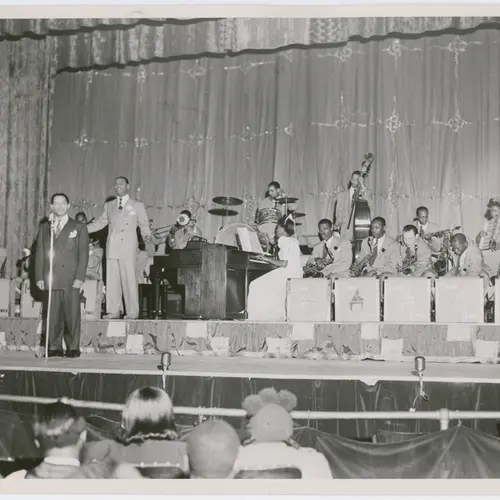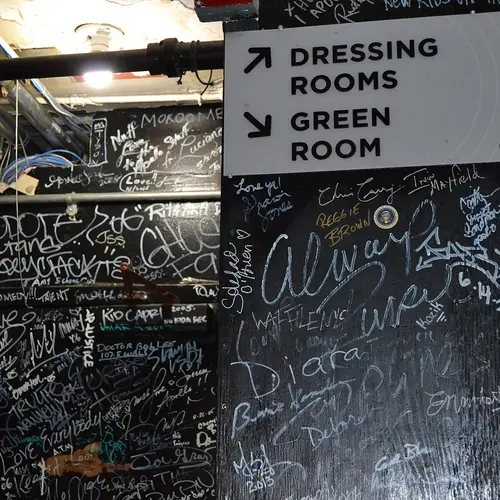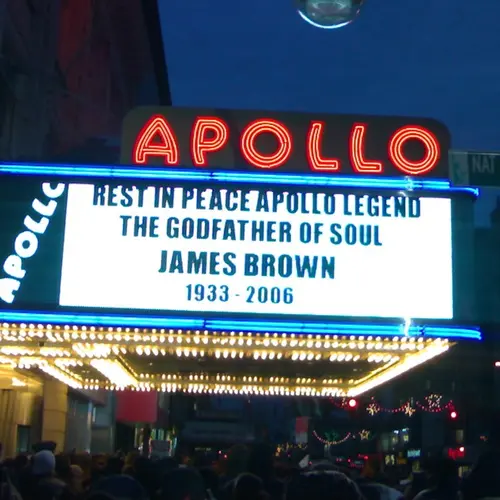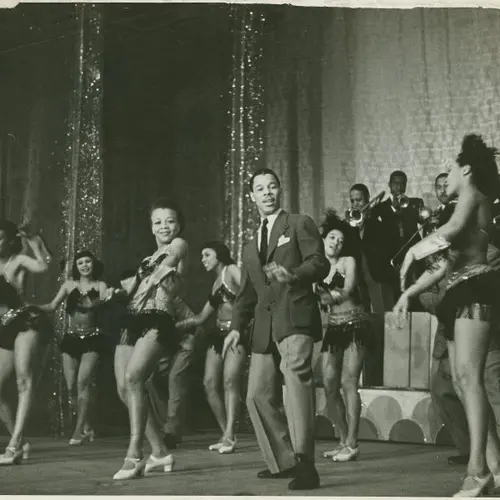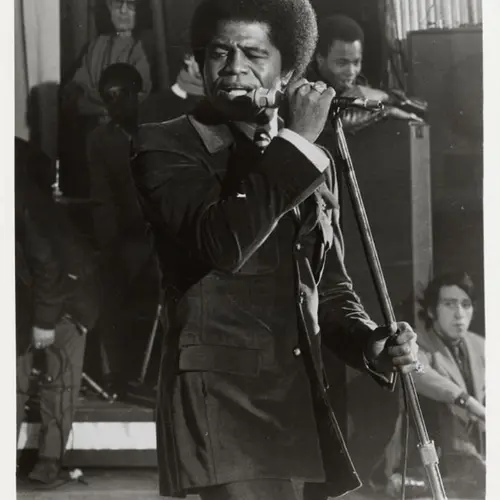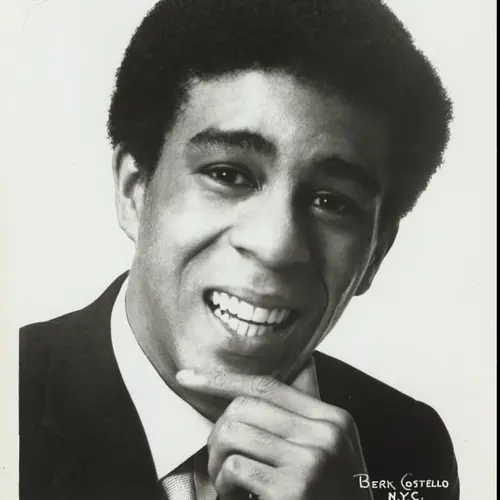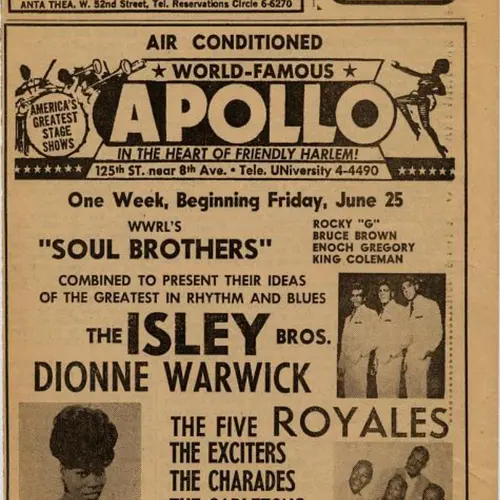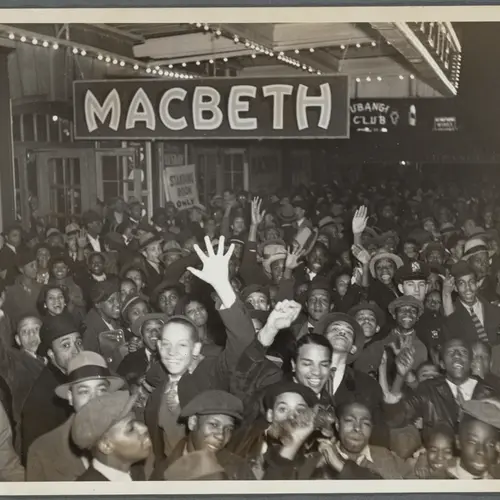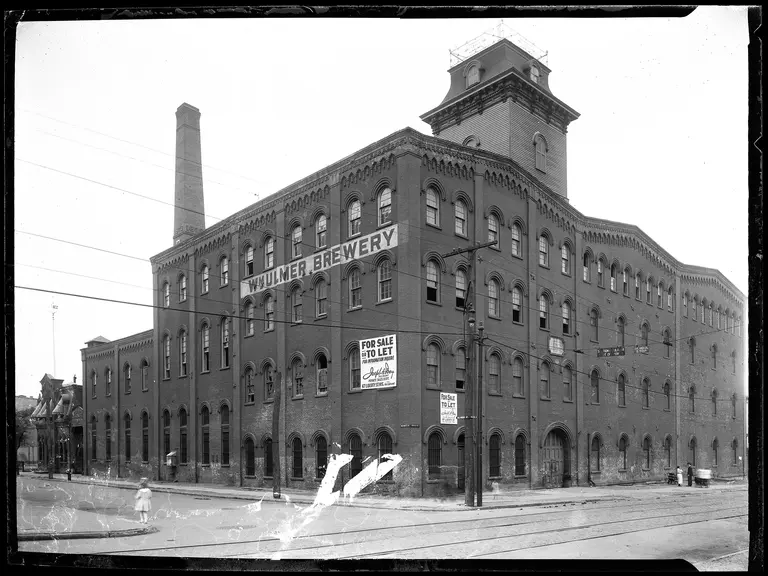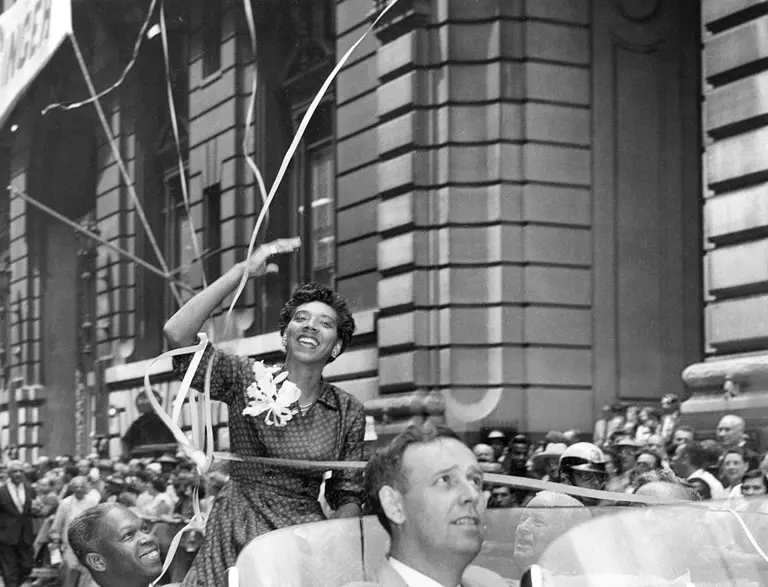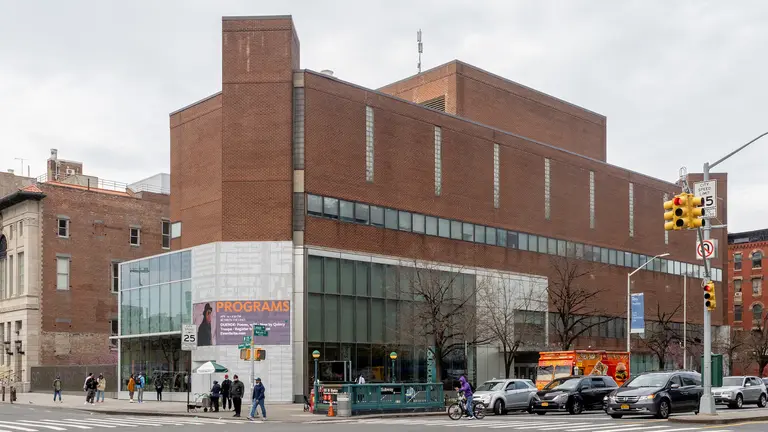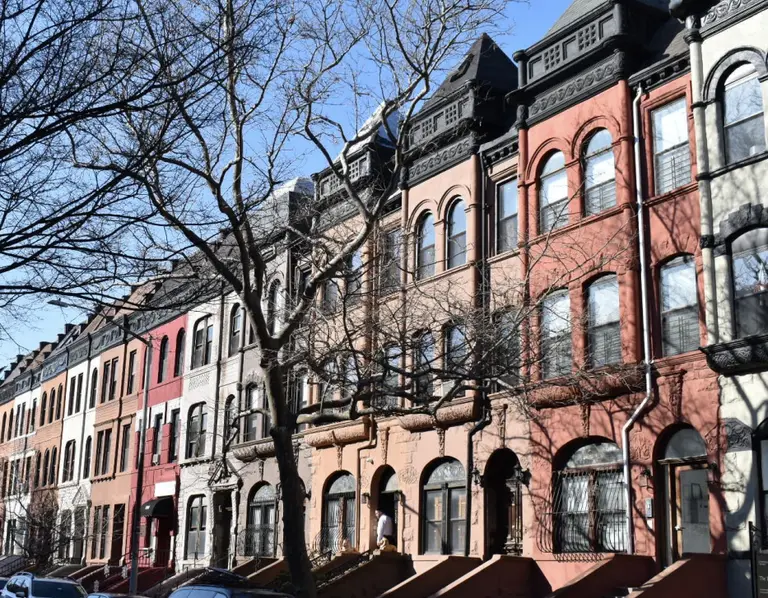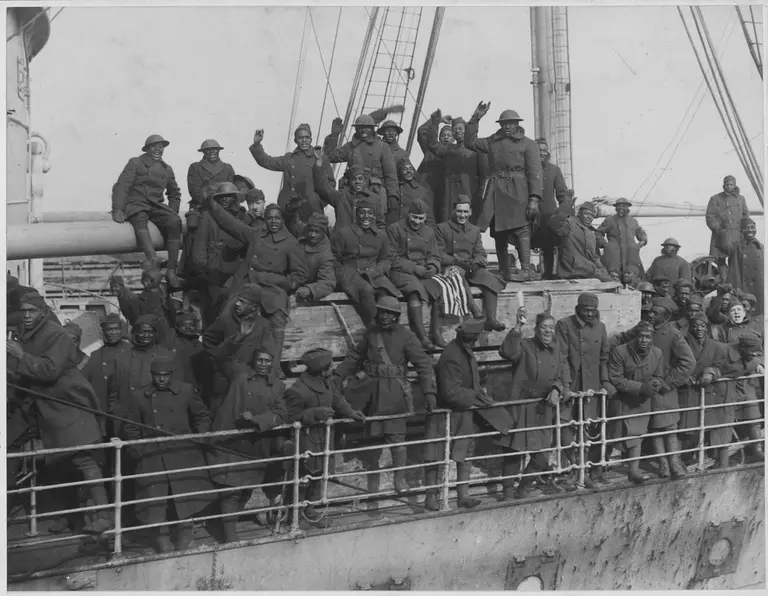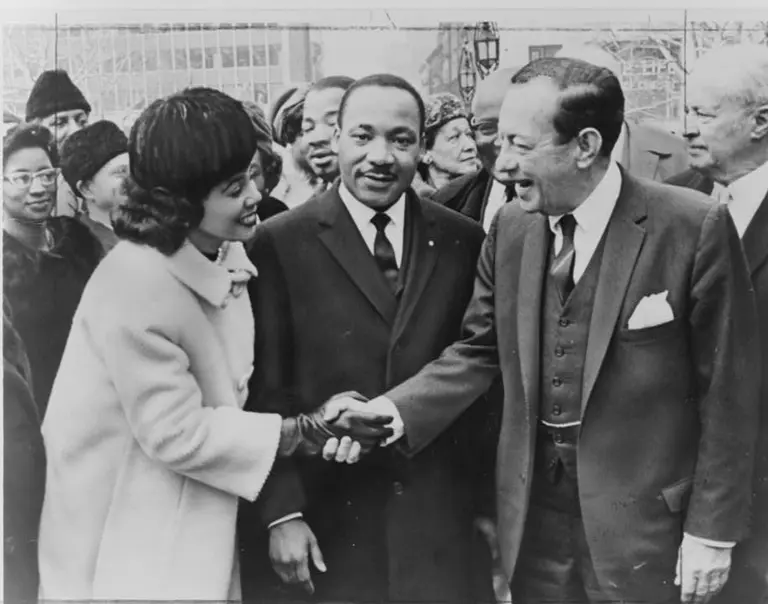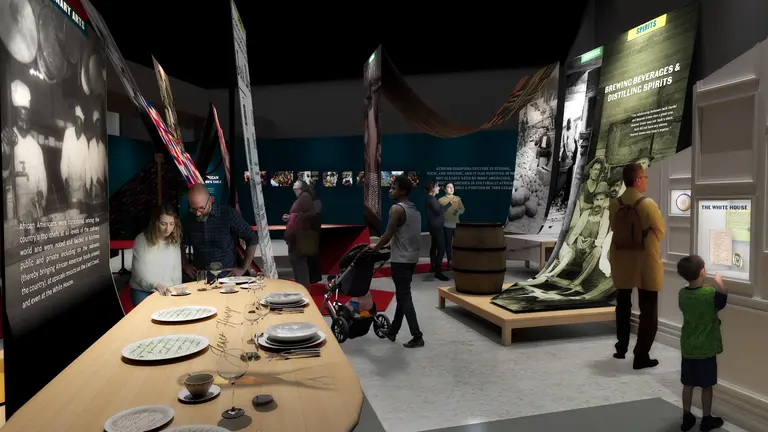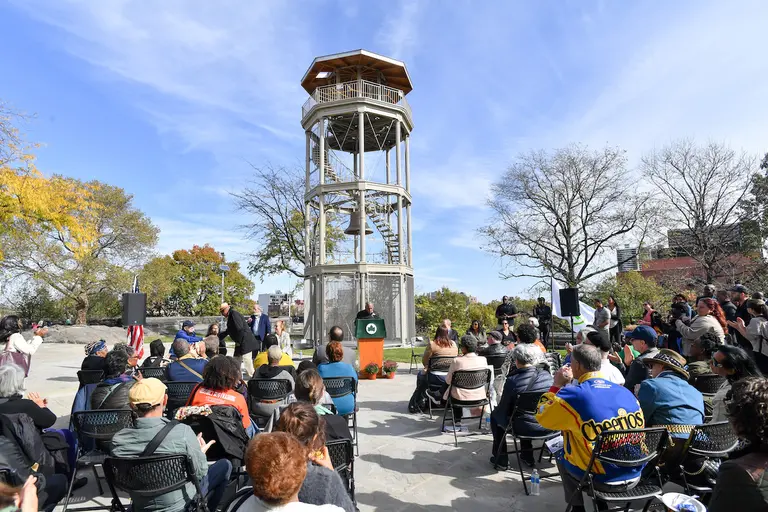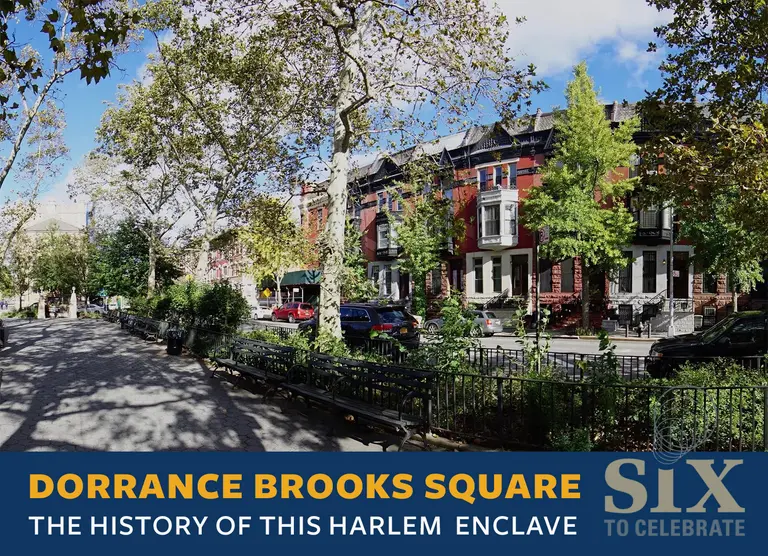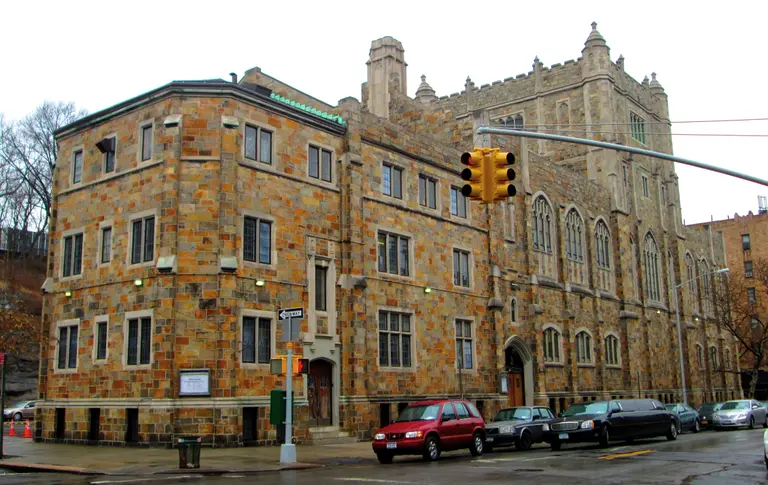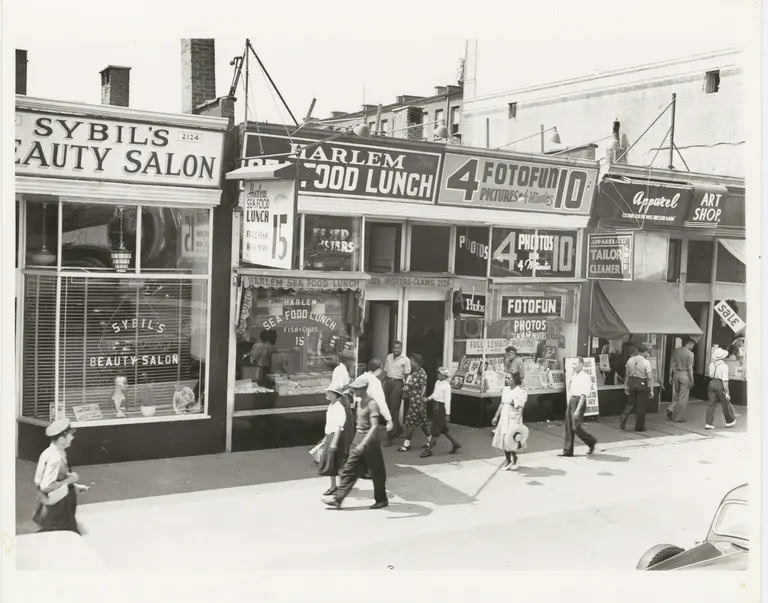10 secrets of Harlem’s Apollo Theater: From burlesque beginnings to the ‘Godfather of Soul’
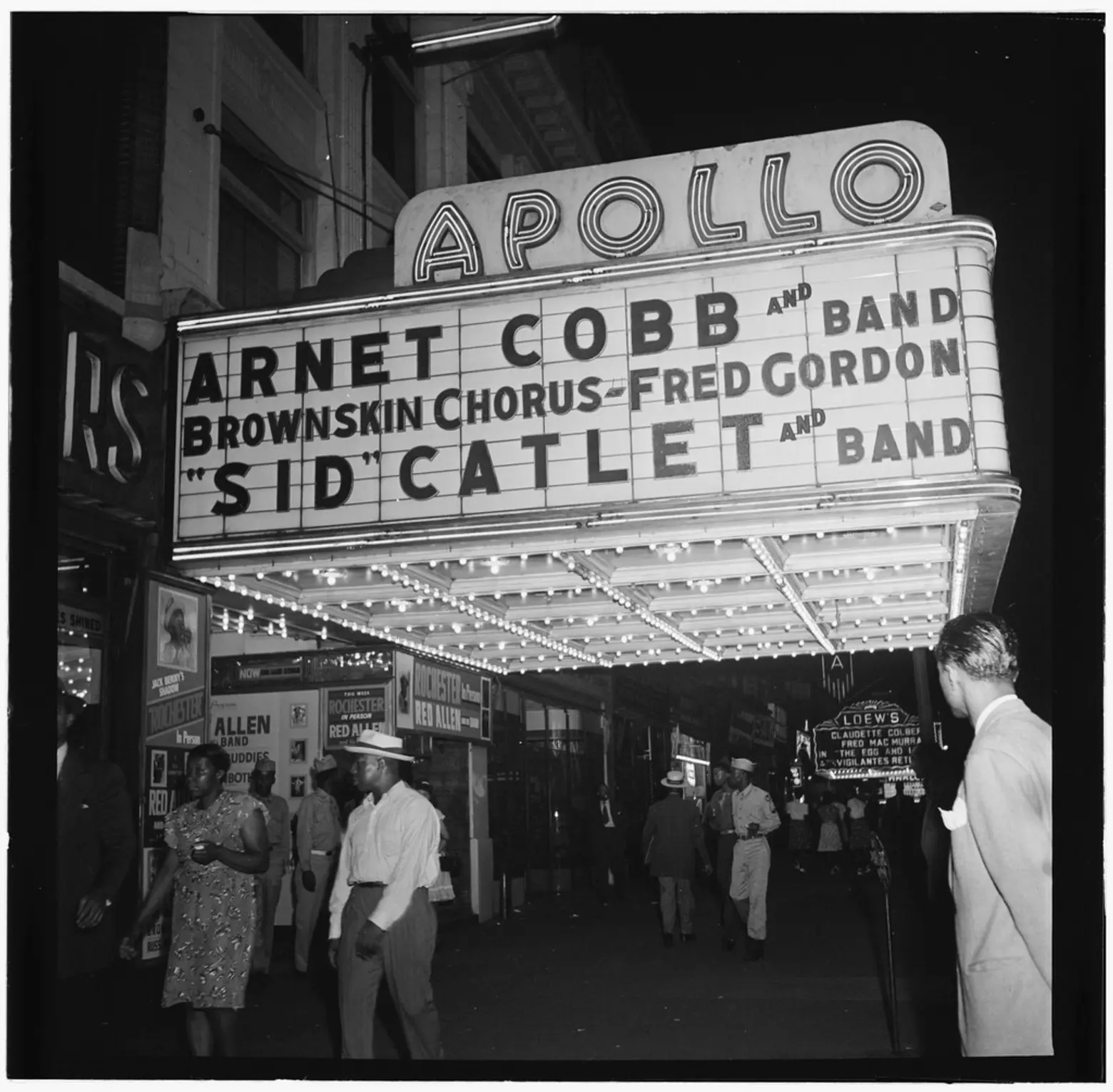
The Apollo Theater c. 1946, via Library of Congress
The Apollo Theater, the legendary venue at 253 West 125th Street “where stars are born and legends are made,” opened its hallowed doors on January 26th, 1934. That year, a 17-year-old Ella Fitzgerald made her debut at Amateur Night, kicking off a tradition that has served as a launch pad for luminaries including Sarah Vaughn, Jimi Hendrix, James Brown, and the Jackson 5. To celebrate its 85th anniversary, we’ve rounded up 10 things you might not know about this iconic Harlem institution, from its beginnings as a whites-only burlesque club to becoming the place where James Brown recorded four albums.
1. The Apollo began its life as a whites-only burlesque theater.
The venue that would become the Apollo Theater initially opened in 1914 as Hurtig and Seamon’s New Burlesque Theater. African Americans were not allowed to attend shows at Hurtig and Seamon’s, or to perform there. The racy venue remained a popular club until Fiorrelo La Guardia shut the place down in 1933 during an anti-burlesque campaign. The following year, owner Sidney Cohen reoriented the theater as a performance venue catering to Harlem’s growing African American community. When Cohen died in 1935, theater operators Frank Schiffman and Leo Brecher instituted the theater’s permanent variety revue format featuring leading African American performers.
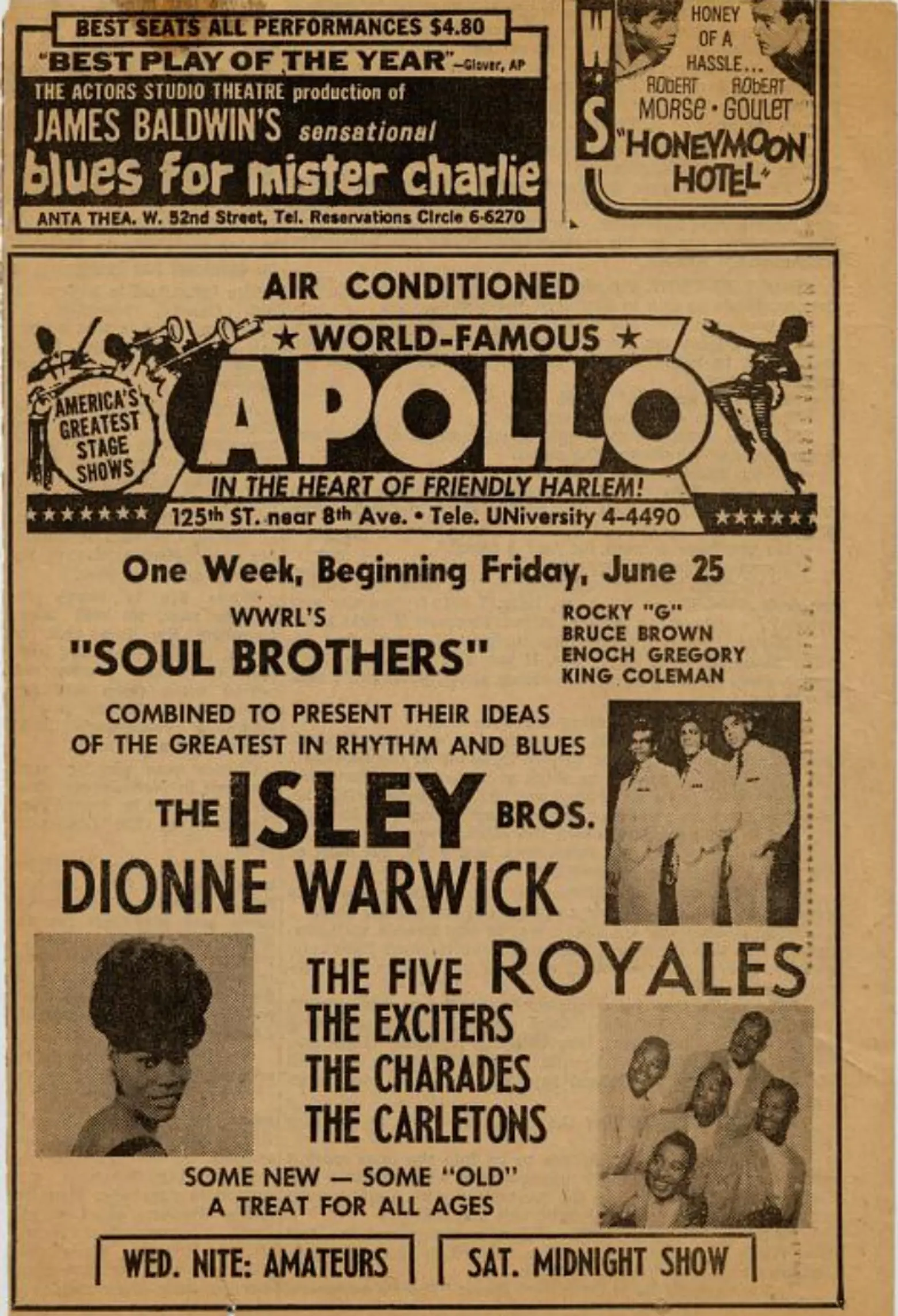
Via National Museum of American History Archives Center
2. You could buy a ticket to one performance and stay all day.
A ticket to the Apollo meant a day’s entertainment. Their general admittance policy allowed patrons to pay for one show, and stay as long as they liked. Because the theater did not clear between shows, when major acts like James Brown played, people would line up outside hours before the performance, in order to get in.
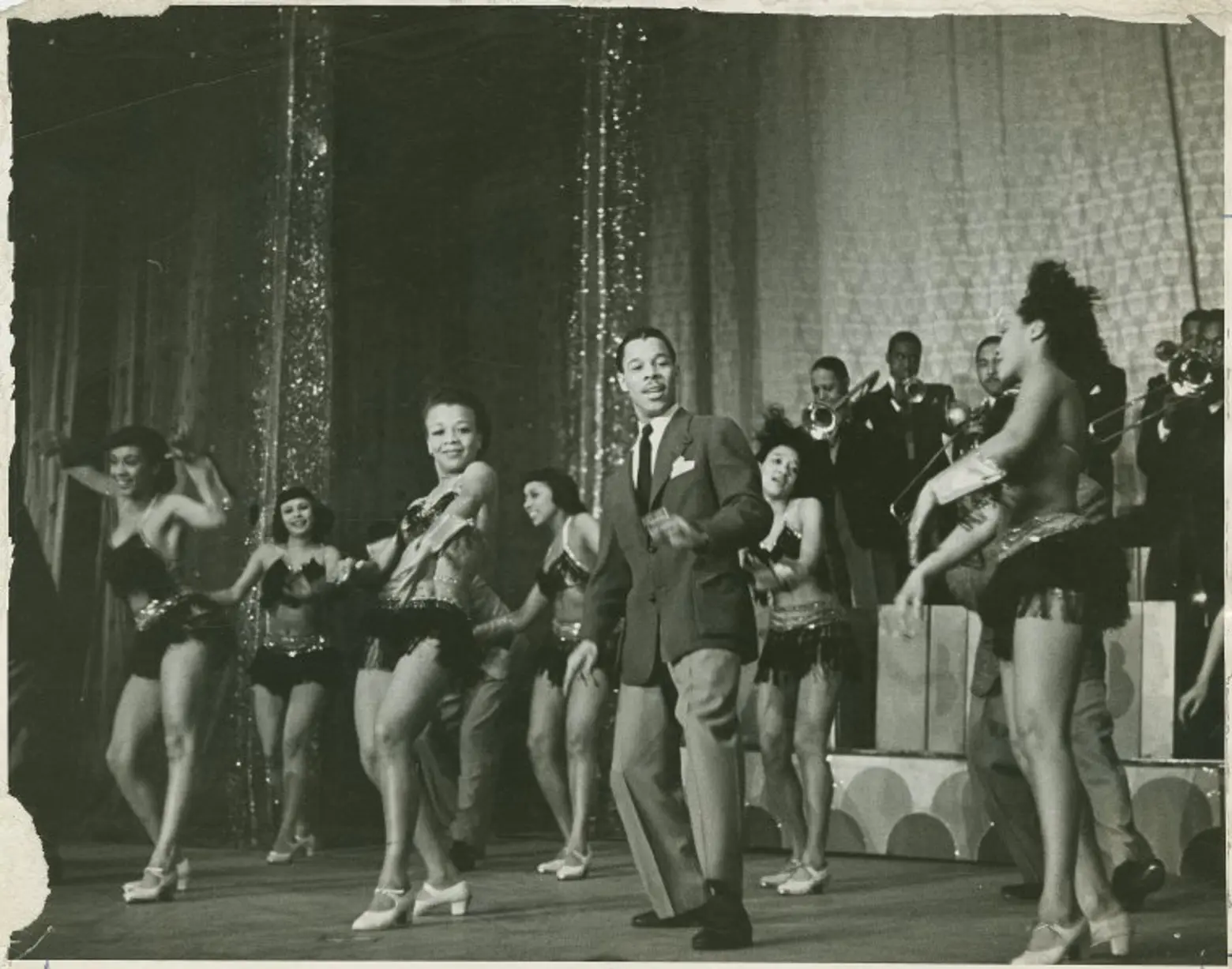 The No. 2 Chorus at the Apollo in the 1930s, via NYPL
The No. 2 Chorus at the Apollo in the 1930s, via NYPL
3. During WWII, the USO called Tuesday Night “Apollo Night”
During WWII, the Apollo set aside 35 tickets every Tuesday for soldiers at the Harlem Defense Recreation Center. Headline acts entertained and socialized with servicemen. The Tuesday performances became so popular with GIs, the local USO Center dubbed Tuesday Night “Apollo Night.”
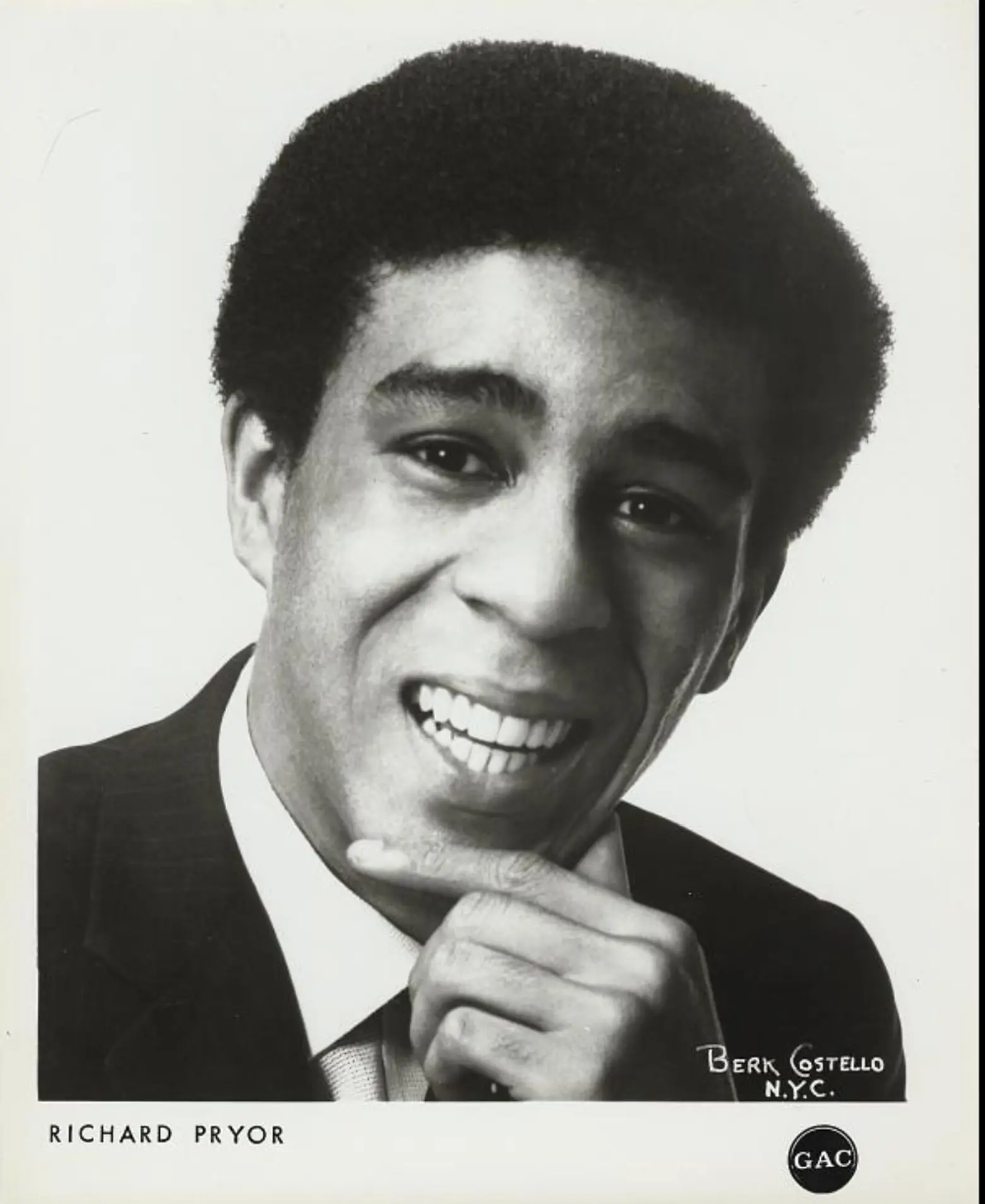
Via National Museum of American History Archives Center
4. The Apollo has staged plays and comedy performances as well as music
The very first play staged at the Apollo was a 1951 production of “Detective Story” starring Sidney Poitier. The first comedian to headline the bill at the Apollo was Timmy Rogers, in 1957. Since then, comedians including Richard Pryor, Whoppi Goldberg, and Chris Rock have all graced the stage.
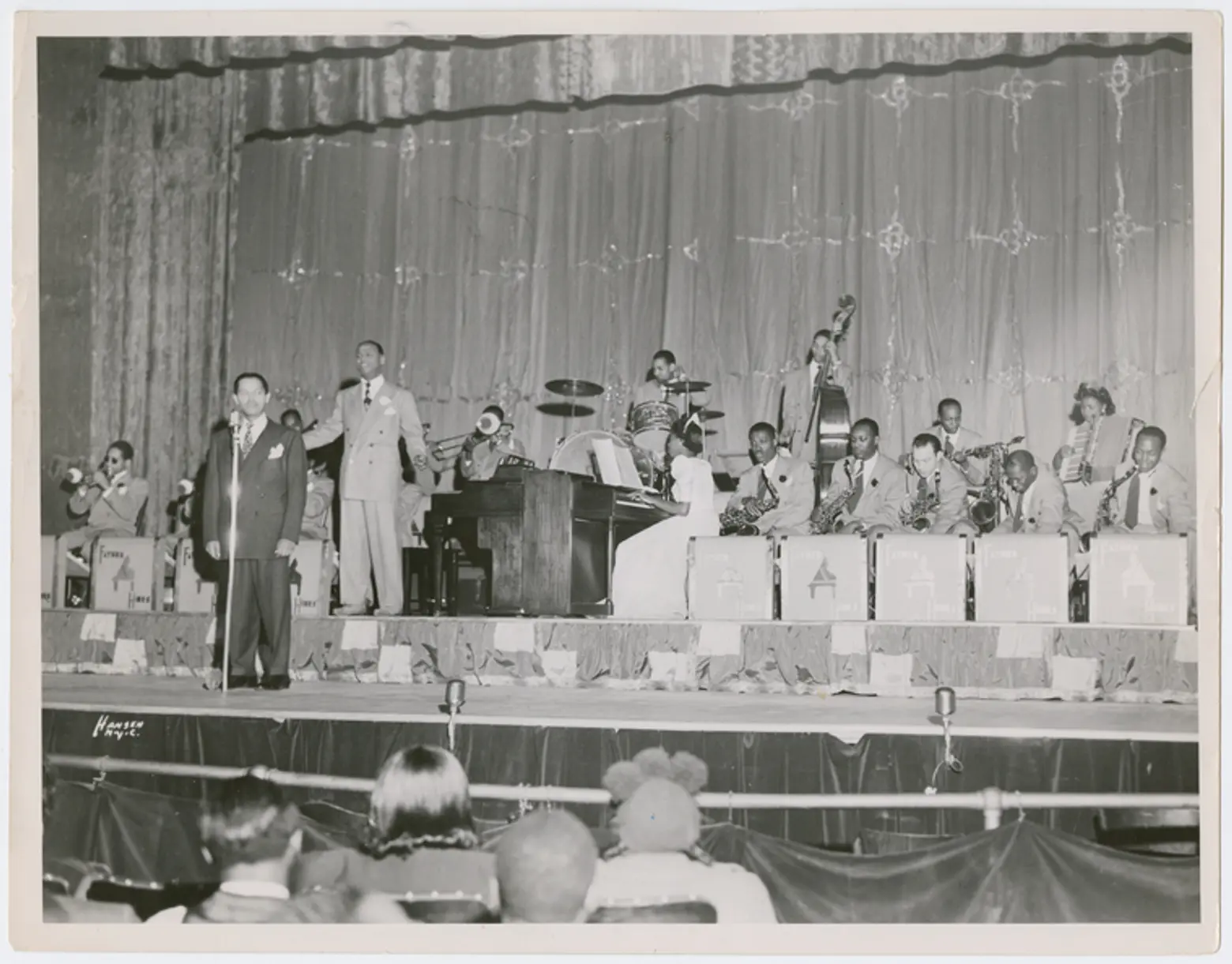 Earl Hines and his big band playing on the Apollo stage in 1935, via NYPL
Earl Hines and his big band playing on the Apollo stage in 1935, via NYPL
5. In the 1960s, the Apollo staged drag shows
In the early ’60s, a drag show called the “Jewel Box Revue” was a winter staple at the Apollo. The show, billed as “25 Boys and One Girl,” played in February when the theater did not book as many musical acts.
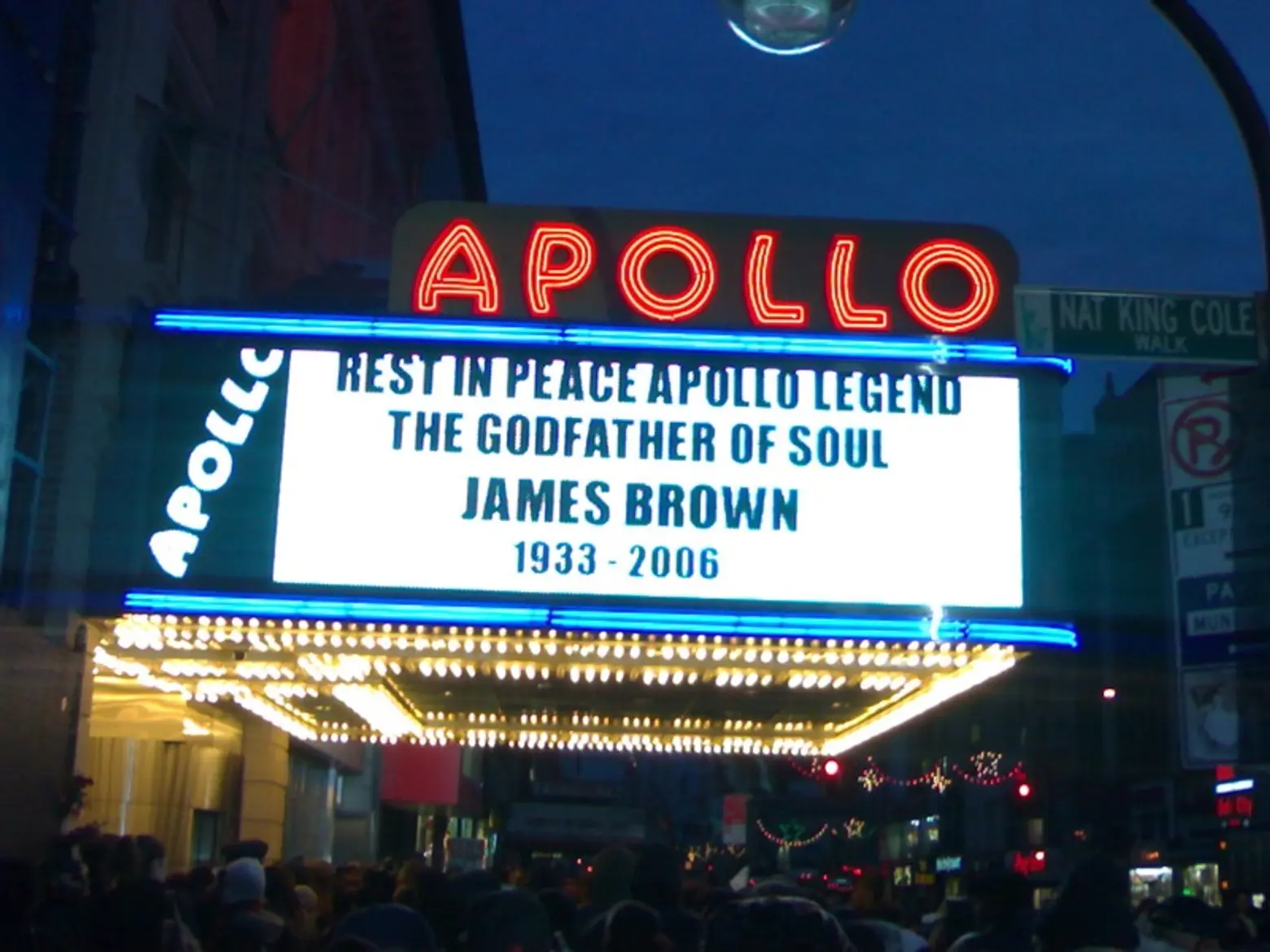 The Apollo’s marquee on the day of James Brown’s memorial in 2006, via Wiki Commons
The Apollo’s marquee on the day of James Brown’s memorial in 2006, via Wiki Commons
6. James Brown lay in State on the Apollo’s stage
The Godfather of Soul recorded four albums and a television special at the Apollo. His first live recording at the theater, 1962’s “Live at the Apollo,” stayed at the top of the charts for 66 weeks. When he died in 2006, he was brought back to the theater he called home. Thousands gathered to pay their respects as he lay in state on the Apollo’s stage.
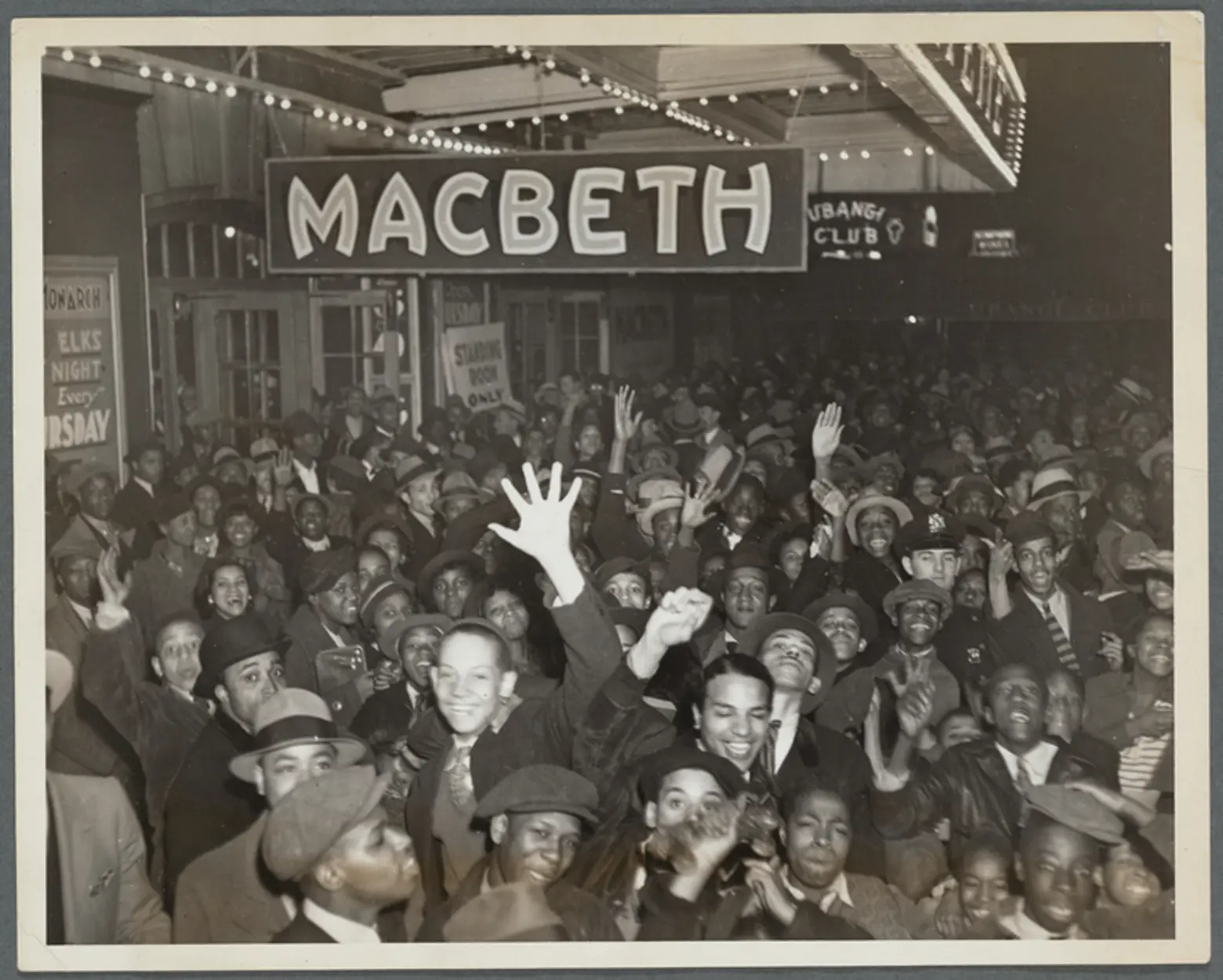
Crowds outside the Lafayette Theater, via NYPL
7. The Apollo’s tree of hope has deep roots in Harlem
Traditionally, Amateur Night contestants rub the Apollo’s “tree of hope” for good luck. Today, the preserved tree stump stands in the wings at Stage Right. But the tall elm once flowered on 7th Avenue before it was cut down in the 1930s. In the early decades of the 20th century, 7th Avenue was known as “the Boulevard of Dreams,” because it was located in the heart of the black theater district. Performers would stand under the trees branches for luck.
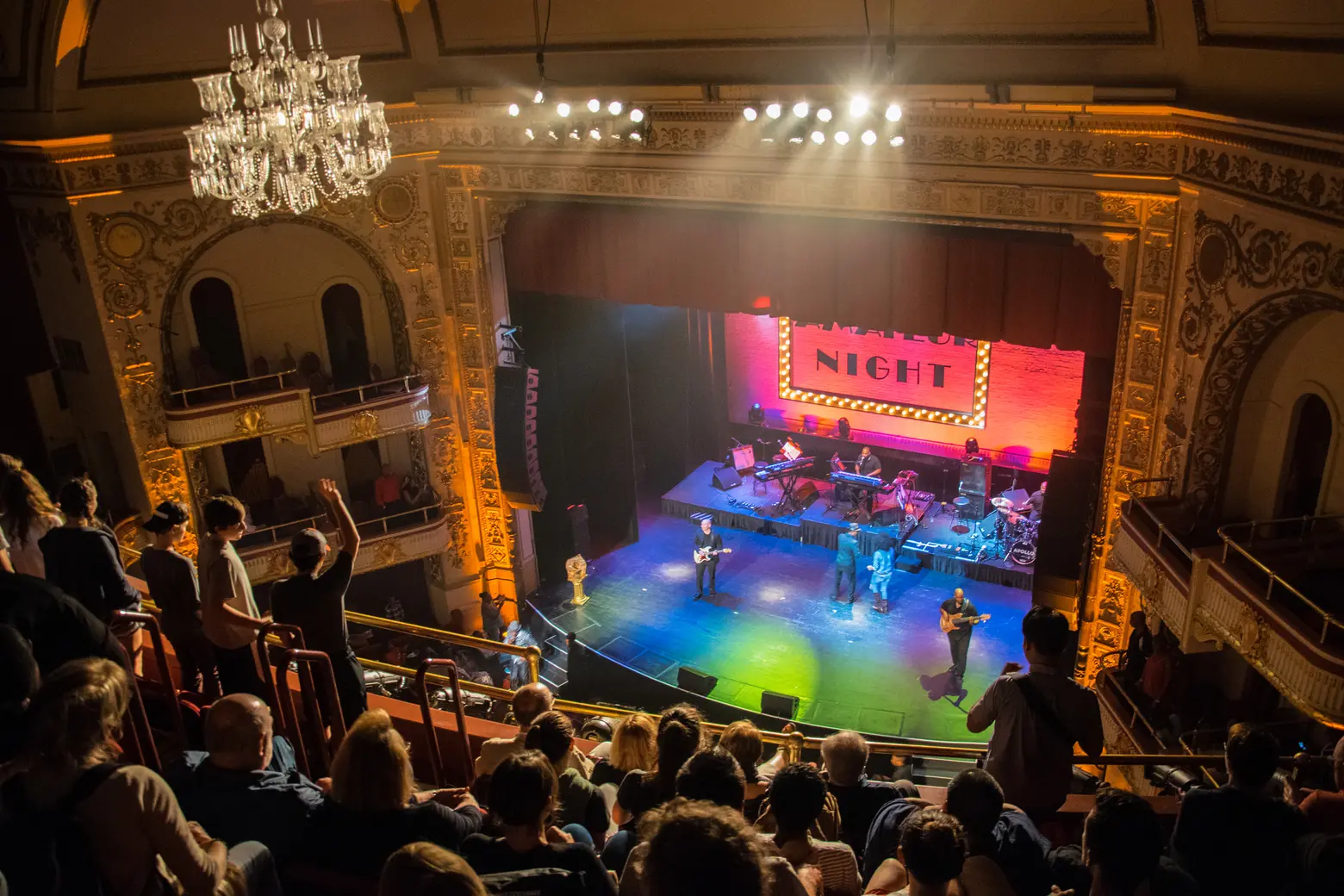 Amateur Night in 2006, via Flickr cc
Amateur Night in 2006, via Flickr cc
8. One Amateur Night Contestant was so lucky he won the competition 25 times!
The tap dancer Howard “Sandman” Sims won Amateur Night 25 times. Nobody can touch his record, because the theater has since limited the number of times any contestant can win Amateur Night to four. After his stint as the king of Amateur Night, Sims became the Theater’s “Executioner” sweeping unpopular Amateur Night acts off the stage with a broom.
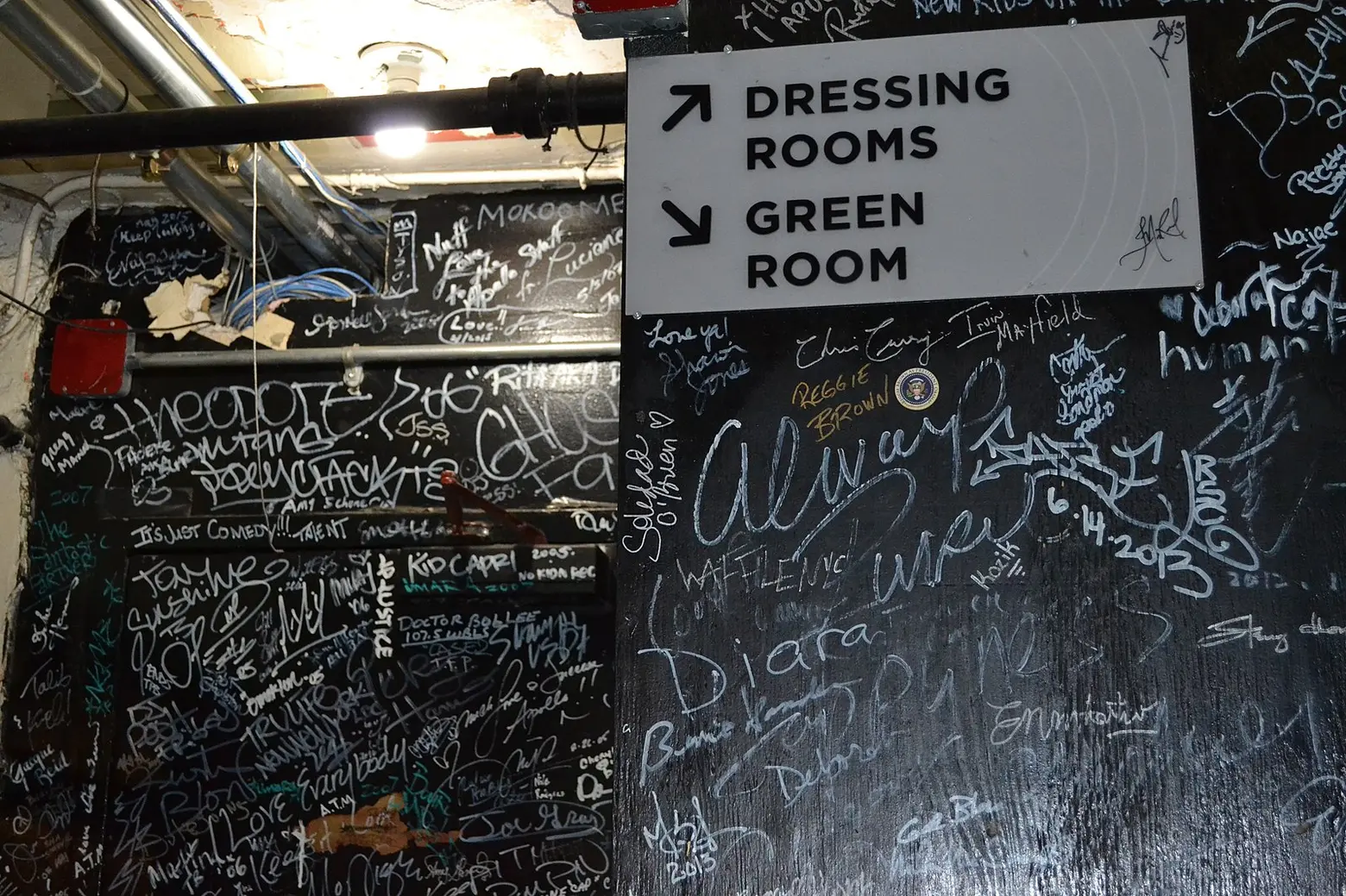 Via Wiki Commons
Via Wiki Commons
9. Celebrities have left their mark on the Apollo
The Apollo’s stage crew began a “Wall of Signature” backstage in 1989. Everyone from John Legend to Barack Obama has signed the wall.
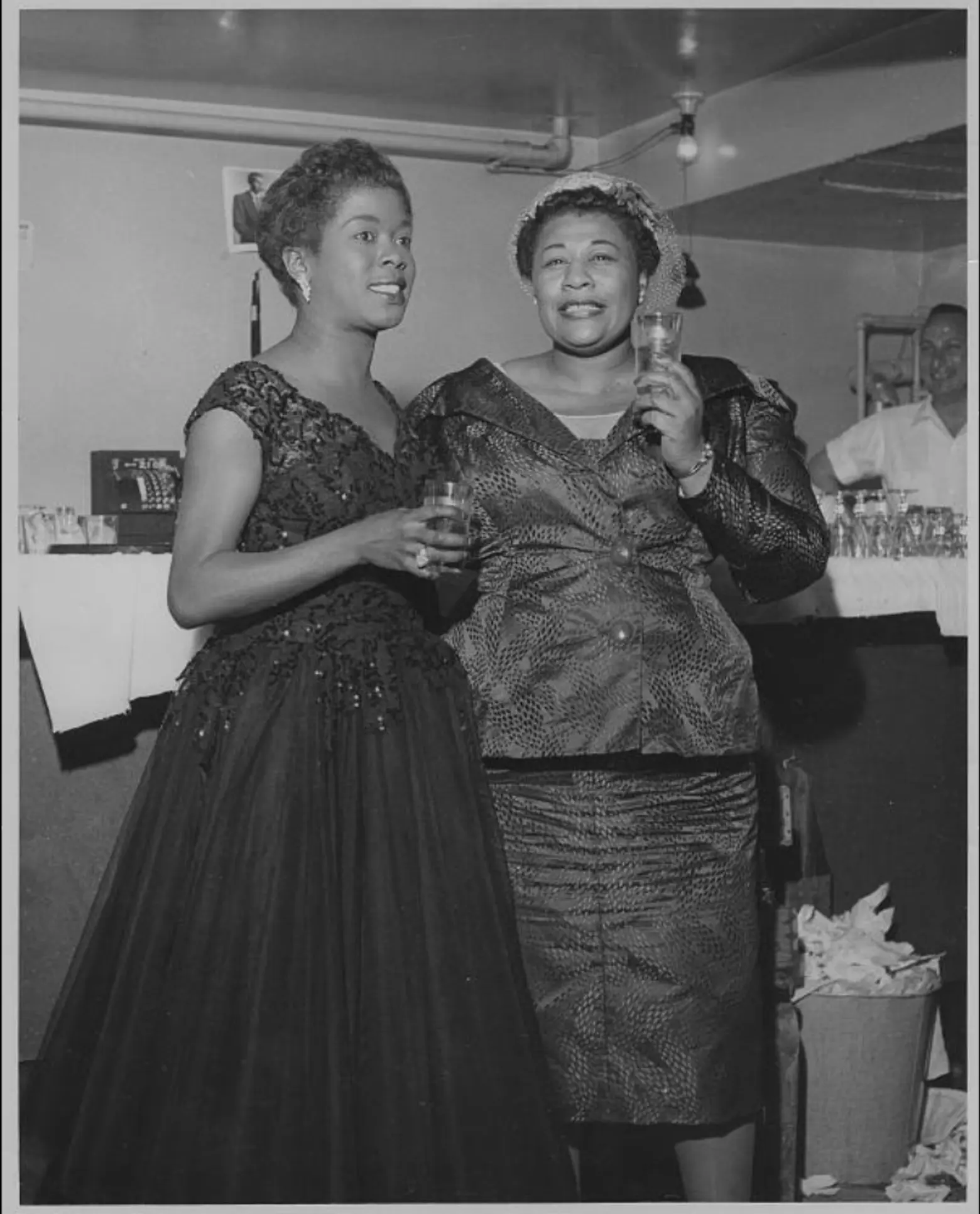
Ella Fitzgerald and Sarah Vaughn c. 1950, via The Smithsonian
10. The Apollo has preserved its original dressing rooms
The theater has upgraded its dressing rooms throughout its history. The most contemporary ones come complete with showers, but performers most covet the oldest ones since they were used by the likes of Ray Charles, Otis Redding, and Aretha Franklin.
On February 2nd, the Apollo will honor its legacy during its 85th anniversary celebration, “Say It Loud: We’re 85 and Proud!” In conjunction with Black History Month, the event will feature artists and thought leaders exploring the theater’s history and cultural legacy through dance, music, storytelling and film. You can reserve free tickets to the celebration here.
+++
 Lucie Levine is the founder of Archive on Parade, a local tour and event company that aims to take New York’s fascinating history out of the archives and into the streets. She’s a Native New Yorker, and licensed New York City tour guide, with a passion for the city’s social, political and cultural history. She has collaborated with local partners including the New York Public Library, The 92nd Street Y, The Brooklyn Brainery, The Society for the Advancement of Social Studies and Nerd Nite to offer exciting tours, lectures and community events all over town. Follow her on Twitter and Instagram.
Lucie Levine is the founder of Archive on Parade, a local tour and event company that aims to take New York’s fascinating history out of the archives and into the streets. She’s a Native New Yorker, and licensed New York City tour guide, with a passion for the city’s social, political and cultural history. She has collaborated with local partners including the New York Public Library, The 92nd Street Y, The Brooklyn Brainery, The Society for the Advancement of Social Studies and Nerd Nite to offer exciting tours, lectures and community events all over town. Follow her on Twitter and Instagram.
